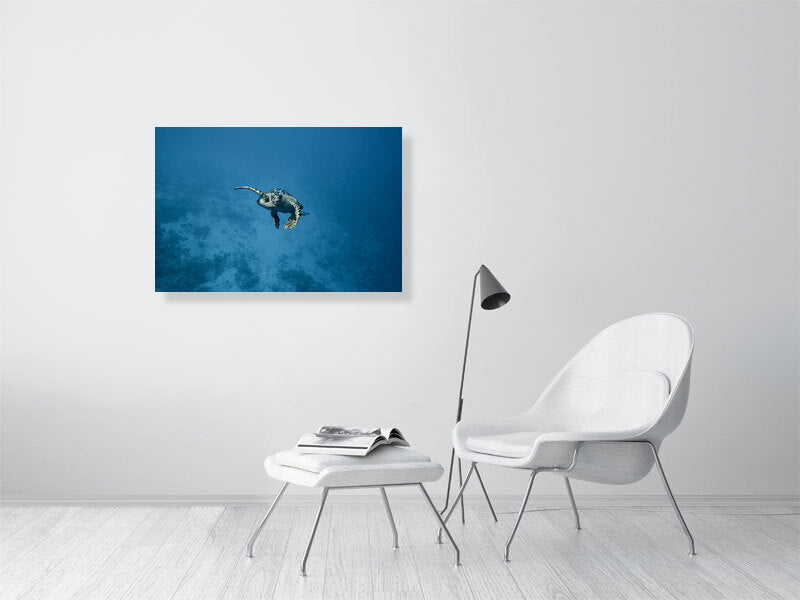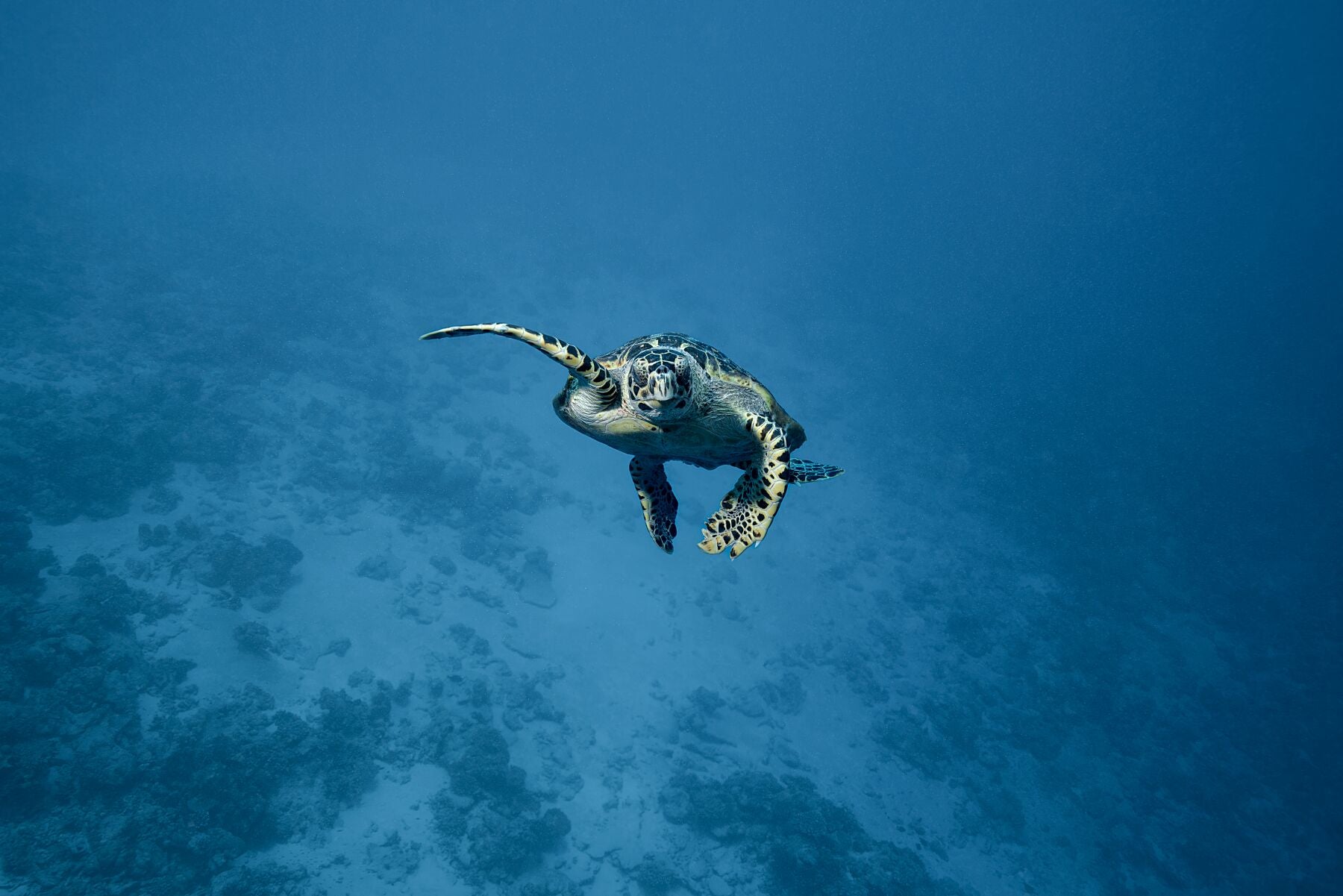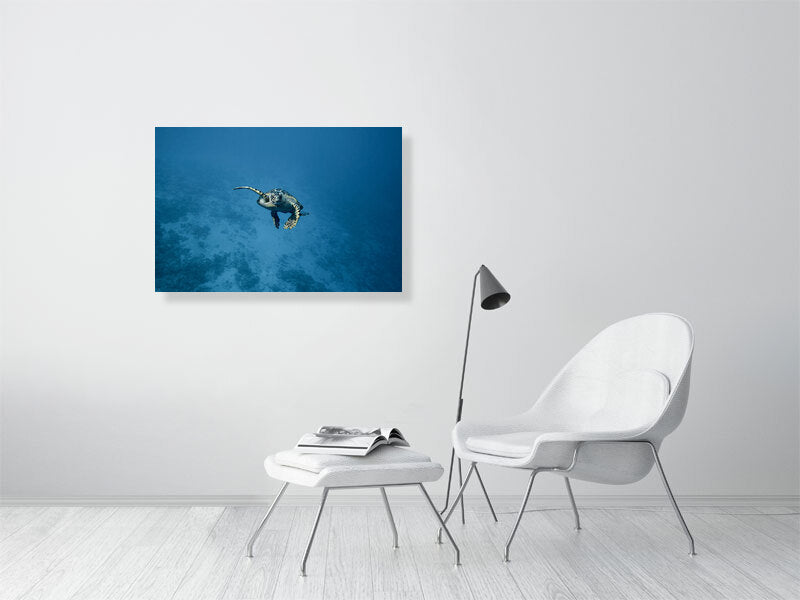Angela Sabino
Strolling
Strolling
Couldn't load pickup availability
The hawksbill sea turtle (Eretmochelys imbricata) is known for its unique crawling and swimming patterns. When the hawksbill sea turtle crawls on land, it exhibits an alternating gait. This means that it moves its front and hind limbs on opposite sides of its body in a coordinated manner as it progresses forward. The tracks left by the hawksbill sea turtle on the sand are often asymmetrical due to this alternating gait. As for their swimming pattern, hawksbill sea turtles are graceful swimmers. Their forelimbs are adapted into flippers, which they use for powerful and synchronized strokes. While swimming, their movements are more symmetrical compared to when they crawl on land. The forelimbs act as paddles, and the hind limbs are used for steering. Hawksbill sea turtles are known for their agility in the water, allowing them to navigate through ocean currents and reach various habitats, including coral reefs where they often feed on sponges.
The unique combination of crawling and swimming behaviors helps hawksbill sea turtles to fulfill different aspects of their life cycle, from nesting on beaches to foraging in the ocean.










